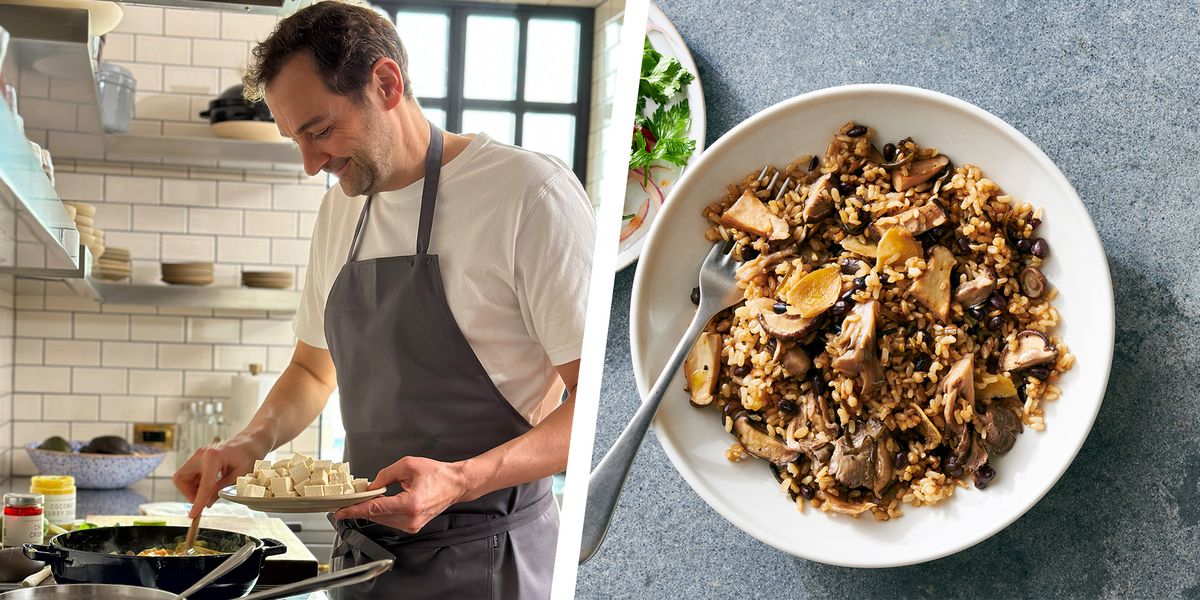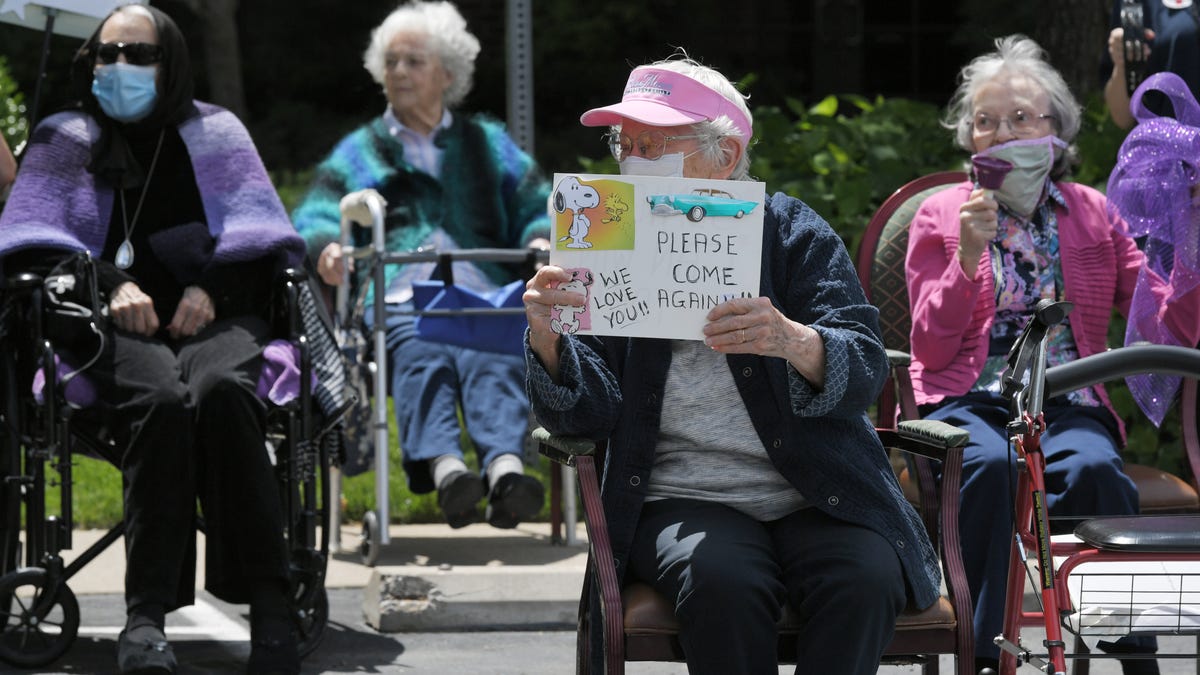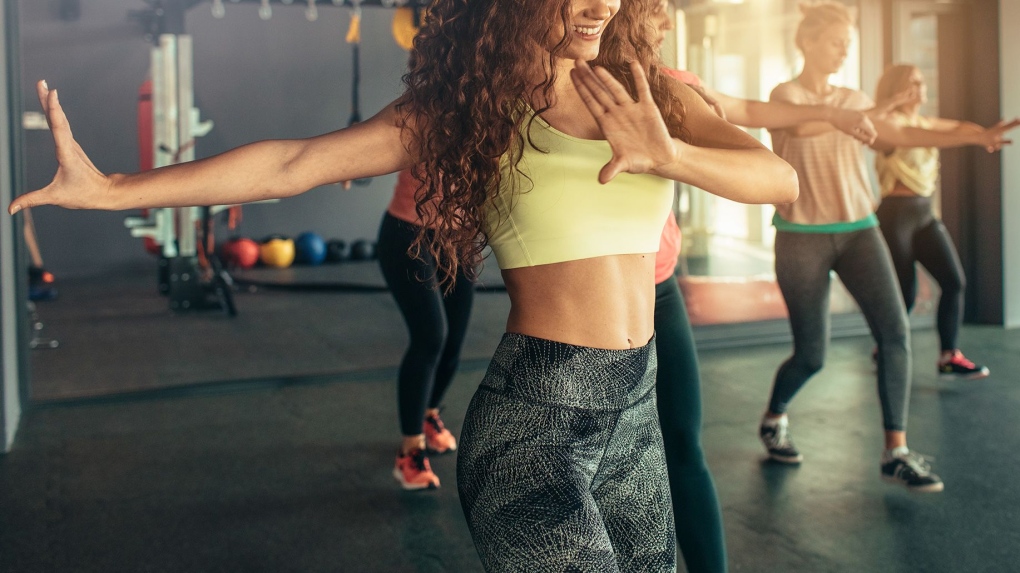I’ve spent my whole life happily walking in one direction: forward. It was, I believed, the only way to go, so I dutifully logged dozens of miles a month looking like every other person out for a morning stroll.
No more. Thanks to TikTok, I discovered a new (to me, at least) spin on walking: backward walking, also known as “retro-walking.” Though it’s trending on social-media platforms right now, physical therapists and fitness trainers have been touting its benefits for years. It’s a low-impact way to burn calories, strengthen your legs, test your coordination, and even improve pain, experts say—all of which lured me onto my quiet, rural street one afternoon to give it a whirl.
After about 50 steps, I realized going in reverse was no walk in the park. It burned. I could feel the switch-up in my lower legs in a way I don’t with ordinary walking unless I’m powering up a hill. There was a mental challenge, too (beyond ignoring the strange looks from my neighbors). I had no idea what was behind me, so I had to engage all my senses to ensure I stayed upright and didn’t trip over any unexpected obstacles—including my walking partner, who was slightly faster and, therefore, a couple steps behind me.
When I told a handful of experts about my surprisingly fun retro-walking expedition, they agreed more people should make it part of their routine. Here’s a look at why.
It’s great for older people
Backward walking is an underrated way to engage your glutes, shins, and the muscles in your feet and ankles, says Joe Meier, a Minnesota-based personal trainer and author of Lift for Life. Plus, it mitigates the impact of each step, reducing the force exerted on the knees and lower back. Part of its appeal, he adds, is that it’s so accessible—and suitable for people of any age and fitness level.
Read More: Why Walking Isn’t Enough When It Comes to Exercise
Meier has noticed that older people, in particular, are drawn to backward walking as a no-frills way to spice up their fitness routine. “If you look around a gym that has tons of treadmills, you’ll see at least one or two people walking backward at any given time,” Meier says. “There are always older individuals walking backward on the ground, too, and you can tell someone has told them, ‘Hey, you should try doing this because it’s great for your balance and coordination—just don’t trip over anything.’” He points out that many pickleball players have adopted the practice: It can help strengthen their knees and ensure they don’t take a (metaphorical) step back on the courts.
You’ll engage different muscles
Walking backward requires you to stand up straighter than you do when walking forward, Meier says. By reversing your stride, you’ll create a new challenge for the muscles in the abdomen, lower limbs, and back. “You might notice your glute muscles—your big butt muscles—are doing more work,” Meier says. (Author’s note: You’ll definitely notice.) Meanwhile, your calf muscles will need to work opposite of how they usually do. When you walk forward, your calf contracts concentrically, which means the muscle gets shorter, he explains. When you’re going in reverse, your calf muscle contracts the opposite way and gets longer as it bears your body weight. That switch-up can be a valuable way to improve your fitness.
You’ll also be targeting the quad muscles on the front of your thighs. According to one study—yes, scientists have studied this—people who walked backward three times a week for six weeks ended up with improved quadriceps muscle strength, compared to those who walked forward for their exercise. The quads are responsible for knee extension and straightening your leg, Meier explains—so they, too, work differently when you’re walking backward. “That’s one of the reasons why people say it helps their knee pain improve,” he says. “You’re essentially strengthening your quads by doing this backward walking trick.”
It can be good for people with injuries
When New York City-based Peloton Tread instructor Marcel Dinkins had patella issues, she took up backward walking. She returned to it recently after tearing her ACL. “You get to push off,” she says, describing the motion required to launch into walking in reverse. “When you have running or knee issues, you usually have a little pain right underneath your patella. Running backward gives you some respite and relief.”’
Read More: Why Hiking Is the Perfect Mind-Body Workout
Retro-walking has a long history of being used in a clinical or rehabilitation sense, says Janet Dufek, a biomechanist and professor in the School of Integrated Health Sciences at the University of Nevada, Las Vegas, who has researched backward walking. One study, for example, found that after a six-week retro-walking program, participants with osteoarthritis in the knee experienced greater reduction in pain and functional disability compared to those who walked in the typical way. Another found that backward walking down a steep slope alleviated symptoms of plantar fasciitis. And in a study led by Dufek, walking backward reduced lower back pain and enhanced function among athletes.
Retro-walking is also used in occupational therapy. Older people might practice walking up to a kitchen sink, for example, and then walking backward away from it. The ability to move in reverse can enhance “practical activities of daily living,” Dufek says.
It could make you more flexible
Many of us sit all day long—which leads to coiled-up, restricted muscles. “Our hip flexors, or the muscles at the front of the thigh and the front of the hip, get tighter,” says Kristyn Holc, a physical therapist with Atlantic Sports Health Physical Therapy in Morristown, N.J. When we walk backward, we’re stretching that tissue—leading to greater flexibility, which is linked to improved physical performance, increased muscle blood flow, and a reduced risk of injuries. “You’ll notice a lot of people, especially as they get older, hinge at the hips—they get a little bit of a bend there,” she says. “That’s because their hip flexors are tight. So if we can stretch those out, it helps us be able to get that upright posture.”
Your gait and balance might improve
Elizabeth Stroot, a physical therapist with Core Wellness & Physical Therapy in Alexandria, Va., uses retro-walking to help people normalize their gait pattern, or how they walk. “It’s a way to tap into our neuromuscular programming and get people to work through a little limp or a range-of-motion restriction,” she says. Walking backward for just 20 or 30 feet at a time is often enough to help some patients, she adds.
Read More: Your Brain Doesn’t Want You to Exercise
It can also improve balance control, especially among older adults, who are at a higher risk of falls. That’s because we maintain our balance through three big systems, Holc says: our eyes, our muscles and joints, and the vestibular system, or inner ear. When we walk backward, we can’t see what’s behind us, which means we have to rely on the other two systems instead, sharpening their ability to keep us upright. “You’re having to feel where you are in space, and that information is being sent to the brain,” she says.
But you need to do it safely
Many people experiment with retro-walking on their treadmill, which is free of hazards like rocks, uneven ground, and other people. You don’t even have to turn it on, Dinkins points out: Simply step onto the machine backward, grasp the handrails, and use your own power to move the belt. “If you’re pushing it, you’re going to get more of that resistance,” she says—leading to a better workout. If you do decide to turn on the treadmill, start at a low speed and keep the safety key clipped to you at all times, Dinkins advises.
No treadmill? No problem: Choose a safe spot indoors or outside, like a hallway, walking track, or empty field. Dufek encourages people to partner up: “Two people face each other and hold hands, and one of them walks backward while the other one’s walking forward,” she says. “That person can be the eyes for the other one, so it’s very safe, and then you just switch places.”
No matter where you start backward walking, keep in mind that you won’t go as fast backward as you do going forward. There’s a learning curve, Dufek stresses: “If you can walk 4 miles per hour forward, don’t expect to be able to walk that fast backward,” she says. “At least initially, if you can walk 1 mile per hour backward, you’re in a good place.” As with any new exercise, ease in gradually. You might walk backward for 5 or 10 minutes three times a week, and then after a few weeks, add 5 more minutes to each session, Dufek suggests. “As your body neurologically learns the movement pattern, you’ll be able to walk faster,” she says. “And of course, walking faster burns more calories, and then you can be out in public and get laughed out for even longer. It’s fun.” How’s that for forward progress?




































